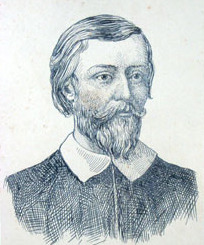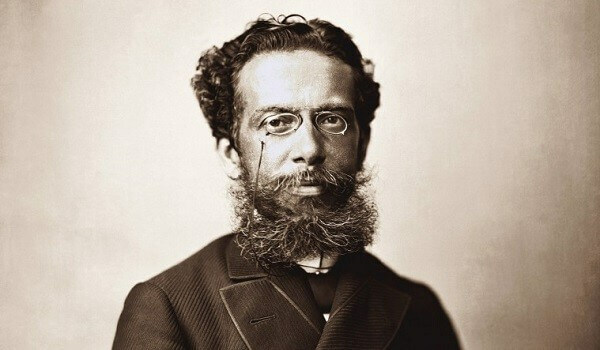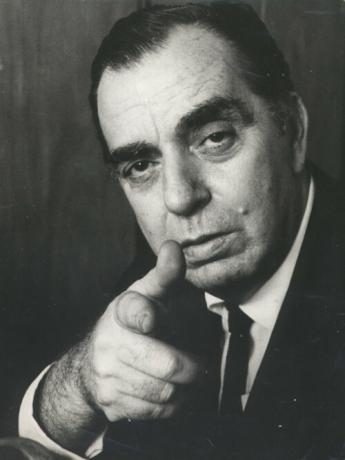Baroque is the name of a period style that emerged at the end of the 16th century, in Italy, and characterized by strong religious influence, due to the historical context marked by the Protestant Reformation and the Counter-Reformation. However, alongside so much religiosity, there was also, at the time, a strong appeal to sensory pleasures. In this way, the style is basically configured in the approximation of opposites.
Therefore, they are features present in works by Gregory of Matos and Fr. António Vieira, the main authors of the Brazilian Baroque: cult of contrast, fusionism, pessimism, feism, cultism, conceptism, in addition to the use of antithesis, paradox, hyperbole, hyperbato and synesthesia.
Read too: Arcadianism – post-Baroque literary movement
Baroque historical context

Two historical facts, in the 16th century, were of great influence on the works of Baroque authors: the Protestant Reformation
and the Counter-Reform. The latter occurred as a reaction to the loss of believers due to Protestantism (Lutheranism and Calvinism).→ Protestant Reformation
- the german priest Martin Luther (1483-1546) denounced the sale of pardon as a corrupt practice of the Catholic Church.
- Luther argued that salvation is only achieved through a life marked by religiosity, repentance of sins and faith in God.
- Realizing that they did not need to pay, with donations and penances, for absolution, many of the faithful left the Church to follow Lutheranism.
- John Calvin (1509-1564) defended the idea that the profit obtained by the work is a divine gift, which increased the stampede of the faithful.
- So, part of the bourgeoisie adhered to Protestantism.
→ Catholic Counter-Reform
At the Council of Trent (1545-1563), the Church defined actions to combat the Protestant Reformation.
→ Important measures:
- Resurgence of the Court of the Holy Office (Holy Inquisition);
- Creating the Index of Prohibited Books — Index librorum prohibitorum;
- Foundation of Company of Jesus by Father Ignatius of Loyola (1491-1556).
So, the religious influence it was remarkable in the formation of Baroque authors. However, in opposition (or as a consequence) to this religiosity, there was also a strong appeal to sensory pleasures, a desire to surrender to worldliness. Therefore, that time was marked by opposition and conflict.
Do not stop now... There's more after the advertising ;)
Baroque Characteristics
O Baroque is a period style marked by opposition and by conflict, which ends up revealing a strong existential anguish. Thus, the literary works of that time present opposing views (approximation of opposites), such as:
- Anthropocentrism versus theocentrism
- Sacred versus profane
- Light versus shadow
- Paganism versus christianity
- Rational versus irrational
- Material versus spiritual
- Faith versus reason
- Beef versus spirit
- Sin versus forgiveness
- Youth versus old age
- Sky versus Earth
- Eroticism versus spirituality

in addition to the contrast cult, the style also has these characteristics:
- fusionism: fusion between medieval vision and renaissance;
- Antithesis and paradox: reflect an era of contrasts;
- Pessimism: happiness, impossible on Earth, would only be realized in the heavenly plane;
- feism: fascination with human misery, cruelty, pain, rot and death;
- refining: excessive ornamentation of language, linked to a visual appeal;
- Hyperbole: overkill;
- Synesthesia: sensory appeal;
- Cultism or gongorism: play on words (synonyms, antonyms, homonyms, puns, figures of speech, hyperbatics);
- conceptism or quevedism: game of ideas (comparisons and ingenious argumentation);
- Morbidity;
- Guilt;
- carpe diem:enjoy the moment;
- Use of the new measure: decasyllable verses;
- Main themes: human frailty, fleeting time, criticism of vanity, contradictions of love.
It should be noted that the presence of light and shadow, in baroque texts, is usually associated with youth (light) and old age (shadow). From this perspective, the baroque poet always reminds readers how fleeting youth is and how quickly old age and, consequently, death arrive. There is, therefore, a overvaluation of youth and the pleasures that this stage of life can offer.
Along the same line of thought, the nature, when portrayed, serves to remind that beauty – for example, that of a rose – is fleeting, like youth. Furthermore, images such as the dawn (transition between night and day) and the twilight (transition between day and night) symbolize the typical dualism of the baroque style.
Read too: Luís de Camões – Portuguese poet who also addressed the fleetingness of time
Baroque in Europe
Baroque emerged in Italy and spread throughout Europe and America. However, the biggest names in European baroque literature they are the Spaniards Luis de Góngora (1561-1627) and Francisco de Quevedo (1580-1645). The Portuguese Baroque (1580-1756) had these authors:
- Francisco Rodrigues Lobo (1580-1622):The prhyme (1601);
- Jerónimo Bahia (1620-1688): poem To the child God in the metaphor of sweets;
- António Barbosa Bacelar (1610-1663): sonnet To an absence;
- António José da Silva (1705-1739), “the Jew”: Works of the devil with the pierced hand;
- Gaspar Pires de Rebelo (1585-1642):Tragic misfortunes of constant Florinda (1625);
- Teresa Margarida da Silva and Orta (1711-1793):Adventures of Diophanes (1752);
- Fr. António Vieira (1608-1697): the sermons (1679);
- D. Francisco Manuel de Melo (1608-1666): Metric works (1665);
- Violating Heavenly Sor (1601-1693): Romance to Christ Crucified (1659);
- Soror Mariana Alcoforado (1640-1723):Portuguese letters (1669).

Next, let's read some excerpts|1| of one of the love letters from Soror Mariana Alcoforado. What draws attention is the approximation between the sacred and profane, since she was a nun, she lived in a place considered sacred and, in that same place, she gave vent to her erotic desire:
“I think I end up doing enormous harm to my feelings when I try to explain them to you in a letter. How happy I would be if you could understand them by the intensity of yours! But I must not trust you, nor must I say - even without the violence I feel - that you do not You ought to mistreat me like that, with a contempt that drives me to despair, and that is even shameful for you. It's only fair that you at least bear the complaints of this unhappiness I foresaw when you decided to leave me.
[...]
I attribute all this unhappiness to the blindness with which I allowed myself to be united with you. Shouldn't I have foreseen that my pleasure would end faster than my love? How could I expect you to stay in Portugal for the rest of your life, to renounce your future and your country to think only of me? There is no possible relief from my suffering, and the memory of that pleasure fills me with despair. Could it be that all my desire was useless, then, and that I will never see you again in my room, filled with the ardor and ecstasy you showed me? My God, how I fooled myself!
I know that all the emotions that occupied my head and my heart only awoke in you at the moment of certain pleasures; and who, like them, soon disappeared. During those happy moments, I should have appealed to reason and moderate or fatal exaggeration of the delight of pleasure, and forewarned against everything I suffer today. But I gave myself so completely to you that I could not think of anything that would destroy my joy and prevent me from fully enjoying the burning testimony of your passion. Feeling that I was with you was so wonderful that I had no way of imagining that one day you would be far from me.
[...]”
Baroque in Brazil
![Statue of Fr. António Vieira, in Lisbon. [1]](/f/476f70238193960de958803d0711b6a7.jpg)
In Brazil, the Baroque (1601-1768) was inaugurated by the book Prosopopoeia (1601), of Bento Teixeira (1561-1618). However, the main authors of this style in the country are Gregório de Matos (1636-1696) and Fr. António Vieira (1608-1697).
Fr. António Vieira
Fr. António Vieira is known for his conceptist sermons, with ingenious argumentation. His texts extol the Christian faith and the Portuguese monarchy. However, he was persecuted by the Inquisition for defending the New Christians (Jews converted to Catholicism). His main work is the sermons, 1679.
Next, let's read the first part of the Mandate Sermon of 1643. In this sermon, Vieira defends that God is sick with love:
“Whoever enters this house today — almighty and all-loving Lord — whoever enters this house today — which is the ultimate refuge from poverty and the universal remedy for infirmities — whoever enters, I say, to visit you — as this whole competition of Christian piety does — can very well doubt whether you came here for a prodigal, if for infirm. You gave heaven, you gave earth, you gave yourselves, and whoso lavishly spent as he was and as much as he had, it is not long that he ended up in a hospital. I was almost persuaded by this thought, but in the judgment of evils he always guessed better who assumed the greatest. Say your evangelist, Lord, that sickness has brought you to this place, not prodigality. Sick says that you are, and so sick that your own knowledge promises you few hours of life, and that for a moment the last is coming: Sciens Jesus quia venit hora ejus (Jn 13:1). What this infirmity is, the Evangelist also declares. He says it's love, and our love, and incurable love. Of love: cum dilexisset; of our love: suos qui erant in mundo; and of incurable and incurable love: in finem dilexit eos. This is, sick Lord, and health of our souls, this is the bad or the good from which you are sick, and what will take you away from life. And because I want to show those who listen to me that I owe you everything for the death, owe you even more for the illness, I will only speak of it. Accommodating myself therefore to the day, to the place and to the Gospel, on the words I took from him, I will treat four things, and only one. You medicines of love and love no remedy. This, divine lover, with the permission of your heart, will be the argument of my speech. We still don't know for sure if your love is distinguishes of your grace. if if do not distinguish, I ask you for your love, without which one cannot speak of it, and if they are different things, for the love of the same love I ask for your grace. Holy Mary."
In this excerpt, we can see the following baroque marks:
- conceptism: Vieira starts defending an idea;
- Pessimism: “[...], but in the judgment of evils he always conjectured better who assumed the biggest”;
- Antitheses: “[...] sick Lord, and health of our souls, this is the bad or the good from which you are sick, and what will take you away from life. And because I want to show those who listen to me that I owe you everything for the death, [...]”; "You medicines of love and love no remedy”; and “We still don't know for sure if your love distinguishes of your grace. if if do not distinguish, I ask for your love, […]”;
- Paradox: “[...], I will treat four things, and only one”.
Throughout the sermon, readers understand that four things are — the medicine of love. They are: time, absence, ingratitude and object improvement. However, these remedies have the opposite effect on God, as they increase his love even more.
Gregory of Matos

Gregory of Matos, also known as mouth of hell, is the ultimate representative of Brazilian baroque poetry. His poetry is divided like this:
- Lyrical or philosophical: love theme, opposition between spirit and matter, fleeting of time;
- sacred: religious themes, human frailty and fear of divine condemnation;
- satiric: social, economic and political criticism.
At the sonnetFickleness of the world's goods, the lyrical self, from antitheses, exposes his perception that sunlight lasts no more than a day; therefore, night always comes. Furthermore, beauty ends, and joy turns to sadness.
he demonstrates his anguish in the face of the inconstancy of the things of the world and concludes that, if even light is not steady, lasting, then beauty cannot be either. This finding explains the paradox “And in joy feel sadness”, that is, the joy of youth and the sadness of knowing that it is fleeting. Finally, the lyrical self concludes that inconstancy is supreme:
Fickleness of the world's goods
The sun rises, and it doesn't last more than a day,
After the Light follows the dark night,
In sad shadows beauty dies,
In continual sadness, joy.
However, if the sun ends, why did it rise?
If the Light is so beautiful, why doesn't it last?
How is beauty thus transfigured?
How does the pen taste like that?
But in the Sun, and in the Light, the firmness is lacking,
In beauty, don't be constant,
And in joy, feel sadness.
The world finally begins by ignorance,
And have any of the goods by nature
Firmness only in inconstancy.
already in the sonnet To Christ S. No. crucified, an example of your sacred poetry, the lyrical self dialogues with Jesus. He says, paradoxically, that he is opposed to the law of God, but that he will die in that law, that is, he lives a life of sin, but in the end, at the hour of death, he will be saved by repentance.
At that time, according to the lyrical self, God will be gentle, meek, and forgive his sins. He says that God's love is too great and his sin (of the lyrical self) too; however, he argues, sin can end, but God's love is infinite. Therefore, he is sure that, however sinful, in the end he can save himself:
To Christ No. S. crucified
My God, who hang from a tree,
In whose law I protest to live,
In whose holy law shall I die
Cheerful, constant, firm and whole:
In this bid, being the last one,
Because I see my life go down,
Yeah, my Jesus, the time to see you
The gentleness of a Father, gentle Lamb.
Great is your love and my crime;
But all sin can end,
And not your love, which is infinite.
This reason forces me to trust,
That, however much I sinned, in this conflict
I hope in your love to save me.
And finally, the poem The one that he called "the woodpecker", made in response to a nun who mocked the poet because of her thinness and called him a “picaflor”, in other words, Hummingbird. So, in this textsatirical, in erotic stamp, the lyrical self attacks the one who offended him. To understand the poem, it is necessary to associate the verb “pica” with the male sexual organ and the noun “flower” with the female sexual organ. From there, there is a suggestion of a sexual intercourse between the lyrical self and the nun to whom the poem is directed:
If Picaflor call me,
Woodpecker accepted to be,
but now it remains to know
if in the name, what do you give me,
you put the flower, that you keep
on the best bird!
If you give me this favor,
being only me Pica,
and the most yours, of course,
that I get then Picaflor.
Read too: Classicism – used the sonnet as one of the main poetic forms
Baroque Summary
- Historical context of the Protestant Reformation and the Catholic Counter-Reformation.
- Features:
- Cult of contrast;
- Antithesis and paradox;
- Pessimism;
- Refining;
- Hyperbole;
- Cultism or gongorism;
- Conceptism or quevedism;
- Morbidity;
- Guilt;
- Carpe diem;
- Use of the new measure.
Mainthematic:
- Human frailty;
- Time fleeting;
- Criticism of vanity;
- Contradictions of love.
solved exercises
Question 01 (Enem)
When God redeemed from tyranny
From the hand of the hardened Pharaoh
The Hebrew People, beloved, and enlightened,
Easter was the day's redemption.
Easter of flowers, day of joy
That People were so afflicted
The day, when by God he was redeemed;
Ergo is you, Lord, God of Bahia.
For sent by the High Majesty
He redeemed us from such sad captivity,
Delivered us from such a vile calamity.
Who can be but a real
God, who came to uproot this city
The Pharaoh of the Brazilian people.
DAMASCENE, D. (Org.). best poems: Gregory of Matos. São Paulo: Globo, 2006.
With an elaboration of language and a view of the world that present baroque principles, the sonnet by Gregório de Matos presents thematic expressed by
a) skeptical view of social relations.
b) concern with Brazilian identity.
c) veiled criticism of the current form of government.
d) reflection on the dogmas of Christianity.
e) questioning the pagan practices in Bahia.
Resolution:
Alternative C.
In the sonnet, the lyrical self, at the beginning, speaks of when God freed the Hebrew people from the tyranny of the pharaohs, to, in the end, make the list of the tyrants pharaohs with the “Pharaoh of the Brazilian people”, that is, the tyrant government of the city of Bahia (Salvador), which was the seat of the Portuguese government at the time. Thus, the lyrical self makes a veiled criticism of this government.
Question 02 (USP)
The certain faded character
A sonnet beginning in your gabo*:
Let's tell this rule first,
There are already two, and this is the third,
Now this little quartet is on the cable.
In the fifth now twists the sow the tail;
The sixth also goes like this:
In the seventh I enter already with grand** tiredness,
And I leave the quartets very angry.
Now in the triplets what shall I say?
I will say that you, Lord, honor me
Boasting to you, and I become a king.
In this life I have already dictated a sonnet;
If from this now I escape, never again:
Praise be to God, I've finished it.
Gregory of Matos.
* praise.
** great.
type zero
You are a type that has no type
with every type you look like
And being a type that assimilates so much type
He became a type that no one forgets
when you enter a salon
and mixes with the crowd
you become a standout type
everyone is suspicious
That your type doesn't qualify
You become a disqualified type
I have never seen any
vulgar type so out of the ordinary
That he was such an observed guy
you are now convinced
That your type is already beaten
But your type is the exhausted type type
Santa Rosa.
Gregório de Matos' sonnet and Noel Rosa's samba, although distant in form and time, come closer together because they ironize
a) the text composition process.
b) one's own inferiority to the portrayed.
c) the uniqueness of a null character.
d) the sublime that hides in vulgarity.
e) intolerance towards geniuses.
Resolution:
Alternative C.
Gregório de Matos dedicates his sonnet to “a certain faded character”, that is, erased, lifeless. Therefore, he ends up resorting to metalanguage, talking about the construction of the poem itself, since he has nothing to say about this character. Noel Rosa's lyrics, on the other hand, speak of a “type zero”, that is, an unimportant person, any type, a vulgar type. Therefore, in both texts, it is possible to perceive the “uniqueness of a null character”.
Question 03 (UFMG)
One of the resources used by Father Antônio Vieira in his sermons is “sharpness” — a way of conducting the thought that brings together distant, different objects and/or ideas through an artificial discourse, which is usually called “discourse ingenious".
Mark the alternative in which, in the excerpt transcribed from “Sermão da Sexagesima”, the author uses this resource.
The) Read the ecclesiastical stories, and you will find them all filled with the wonderful effects of the preaching of the word of God. So many converted sinners, so much change of life, so much reform of customs; the great ones despising the riches and vanities of the World; kings giving up scepters and crowns; the youths and the kindnesses entering the deserts and the caves [...].
B) Miserable of us, and miserable of our times, for in them the prophecy of S. Paul: [...] “The time will come, says S. Paul, that men will not suffer sound doctrine.” [...] "But for their appetite they will have a great number of preachers made lavish and without choice, who do nothing but flatter their ears."
ç) For a man to see himself three things are necessary: eyes, mirror and light. [...] What is the conversion of a soul if a man enters himself and sees himself? For this view, eyes are needed, light is needed, and a mirror is needed. The preacher competes with the mirror, which is the doctrine; God competes with light, which is grace; man competes with the eyes, which is knowledge.
d) When David went out into the field with the giant, Saul offered him his weapons, but he would not accept them. With the weapons of others nobody can win, even if it is David. Saul's weapons only serve Saul, and David's, David's, and he takes advantage of a staff and a sling of his own more than someone else's sword and spear.
Resolution:
Alternative C.
In the passage, Vieira brings “eyes”, “mirror” and “light” together and builds a relationship between these elements, as they are necessary for human beings to see themselves, see their own souls. The mirror is the doctrine; the light, the grace; and the eyes, knowledge.
Note
|1|Translated by Marilene Felinto, as the letters were first published in France.
Image credit
[1]BadAngela Cruz / Shutterstock
by Warley Souza
Professor of Literature
(UNIV. CAXIAS DO SUL) Choose the alternative that correctly completes the sentence below:
The ______ language, the paradox, ________ and the registration of sensory impressions are linguistic resources present in ________ poetry.
a) simple; the antithesis; parnassian.
b) far-fetched; the antithesis; baroque.
c) objective; the metaphor; symbolist.
d) subjective; the free verse; romantic.
e) detailed; subjectivism; symbolist.
a) Baroque establishes contradictions between spirit and flesh, soul and body, death and life.
b) Man centers his concerns on his own being, with a view to his improvement, based on the Greco-Roman culture.
c) Baroque features, as a striking feature, the spirit of tension, conflict between opposing tendencies: on the one hand, medieval theocentrism; on the other, Renaissance anthropocentrism.
d) Baroque art is linked to the Counter-Reformation.
e) Baroque is characterized by obscure syntax, use of hyperbole and metaphors.



